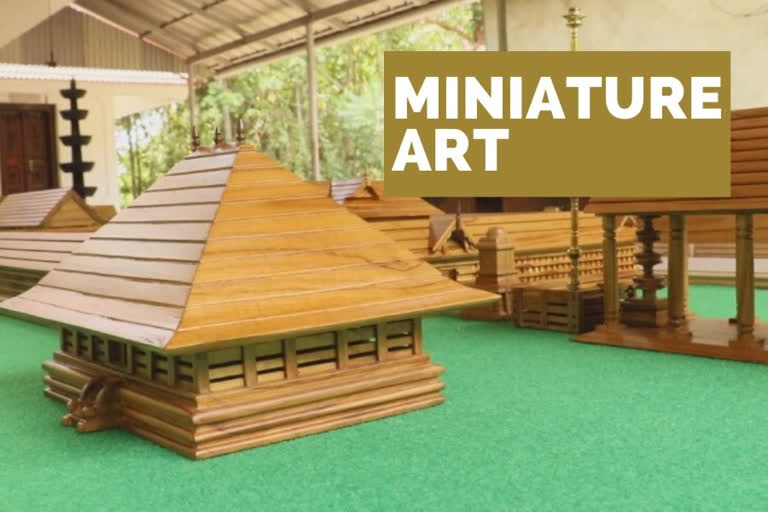Thrissur: The end of a season of all temple festivals in Central Kerala is marked by the culmination of Thrissur Pooram, arguably the most popular temple festival of Kerala. As part of the finale at Thrissur, a festival flag is hoisted marking the beginning of the ten-day festival at Irinjalakuda Sree Koodal Manikyam temple, every year. However, this time, as the whole nation is battling the COVID-19 pandemic, festivals and gatherings stand cancelled.
This is when Ratheesh Unni, a native of Gandhigram in Irinjalakuda, decided to work on his dream project, a miniature version of the temple festival.
Ratheesh has been beholding all the festivities and grandeur of the Koodal Manikyam temple festival right from his childhood, every year, without fail. He has been planning to make a model, a miniature of the festival at this temple, in wood. Exactly a month into the lockdown, Ratheesh has completed his piece.
Read: Jackfruit recipes are taking over Kerala tastebuds amid lockdown
Koodal Manikyam Bharatha Temple, sprawling in 4 acres of land in Irinjalakuda, holds an esteemed position among the temples of India, with the peculiarities in the temple customs and for its magnificent sculptures.
He has been in the process of creating a scene from the festival - where the adorned elephants move forward together, accompanied by the percussion ensemble playing the rhythm of Chembada (one of the rhythm patterns used in temple festivals), by the banks of Kulipini Theertham (a pond near the Temple considered holy) - with his handwork on wood.
Giving life to the magnificent model of the temple Ratheesh created, one can see the fishes swimming in the 'Kulipini Theertham' by the temple. The miniature model of the temple has been made in teak wood. It is 8 feet long and 5.5 feet wide.
Ratheesh has recreated the whole setting, complete with the idol of Lord Sangameshwaran taken out in procession on the Koodal Manikyam temple elephant Megharjunan, the compound wall and Kuthambalam (an auditorium in the temple premises to perform temple art forms).
It is being said that Ratheesh’s ancestors relocated from Palakkad, centuries ago, for the construction of this temple. They were facilitated with land owned by the temple to complete the work.



